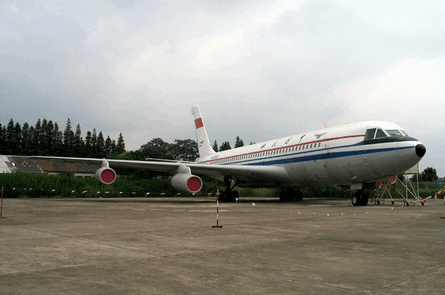When China's state council last year approved an ambitious plan to develop large commercial aircraft, official media boasted that it would help the country become less reliant on Airbus and Boeing.
But when Commercial Aircraft Corporation of China (CACC) was formally launched on 11 May to oversee development of an aircraft seating at least 150 passengers, the tone was different.
"Since large aircraft cannot be made in one or two days, CACC will pose no threat to large jet-makers like Boeing and Airbus," said the new company's president, Jin Zhuanglong.
He added that CACC "welcomes co-operation from foreign companies", and refused to be drawn on when the new aircraft may be flying. China had previously been talking of flying a new aircraft by around 2020.
It was a subtle change in tone for China, which for decades has longed to be a manufacturer of large commercial aircraft.
In the 1970s and 1980s China tried to build a large jet with the four-engined Shanghai Y-10, which was suspiciously similar to the Boeing 707.
 |
|---|
© Taecouxu |
It was ultimately a failure, as was the subsequent TrunkLiner programme under which McDonnell Douglas aircraft were to have been produced in China. China has also developed turboprop aircraft based on Soviet-era designs, but these have not been commercial successes.
One problem is airlines do not like being told what they must fly, in large part due to reliability issues and weak after-sales support for aircraft produced in China to date. The government appears to finally recognise that, however, as it is talking publicly about partnering extensively with foreign companies on the new aircraft to ensure it is of high quality.
It is a template already followed with a current aircraft programme, the 90-seat ARJ21 regional jet, which it hopes will fly for the first time later this year. Most of its key components are supplied by Western companies.
China has also been forging partnerships in other ways to develop its aerospace manufacturing expertise. State-run factories now produce parts for most of the world's major airframe and engine makers. Embraer ERJ-145s have also been produced in China since 2003 and Airbus A320-family aircraft will soon be assembled in the country.
But despite a huge home market, China faces a mammoth task in creating a genuinely competitive mainline airliner, let alone becoming a serious challenger to the incumbents.
Airbus is living proof that a new aircraft manufacturer can come into the market with a single product and prove the doubters wrong. But it was created in 1970 from the group of established European airframers, albeit with an eclectic mix of airliner types, and found a niche by developing the world's first widebody twinjet.
With the help of its partners' governments, Airbus Industrie, as it was called then, was able to tactically expand its product line in areas where its competitors were weak and eventually saw off two of its three US rivals to become the equal of Boeing. But this was a long and weary process that trod a far from certain path in its early days.
China does not have the solid foundations of companies such as Airbus, points out the European airframer's chief operating officer customers John Leahy, but he expects it will eventually succeed in becoming a player. "As they acknowledge, it will take at least 20 or 30 years, and we will help them," he says. But he cautions: "You can't compete with just one aircraft model no matter how good it is, as Lockheed proved with its L-1011 in the 1970s."
China's track record with the ARJ21 - arguably the legacy of the country's McDonnell Douglas tie-up in the 1980s as it resembles a modernised DC-9 - has done little so far to endorse the belief that it is ready to enter the big time.
"In 20 years' time they'll have something that is competitive with a 2005 jet airliner built by Airbus or Boeing," says Richard Aboulafia, vice-president analysis at Teal Group. "The plan just doesn't look like being a threat."
Aboulafia says it would be plausible for a new entrant in the mainline airframer sector to eventually become competitive, "but it is a question of time and money. There won't be any meaningful revenue for decades and the time it will take to get a return means the private sector won't go near it".
This means that, as is the case in China, the project would need state backing, but "governments are terrible at creating aircraft that airlines want", he says.
While there would be pressure on national airlines to acquire a less competitive aircraft because it is locally built, "the reality is that the private sector is driving it and airlines will buy what they want".
So the answer is to transition the manufacturing business to the private sector. Aboulafia cites the success of Embraer, which spent the 30 years that it was under government control as a bit-part player before becoming a leading regional airframer following its privatisation in the 1990s.
But there are no signs that the Chinese government plans to transition CACC to the private sector any time soon. Its biggest single shareholder is the state-owned Assets Supervision and Administration Commission. State-owned aerospace groups AVIC I and AVIC II are also major shareholders, as are state-owned steel and aluminium producers and the Shanghai government.
Source: Flight International
















